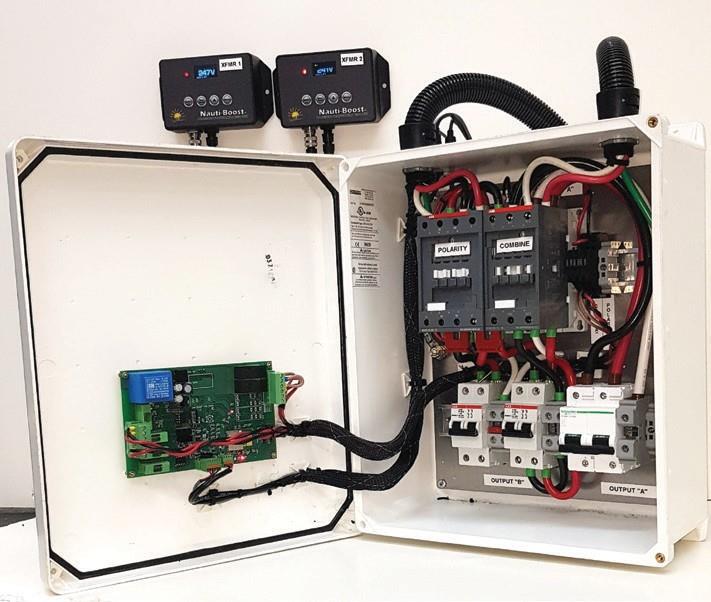
Nauti-Combine: A smart transformer combiner
by Jack Brunier 20 Sep 2018 15:25 BST

Nauti-Tech Systems announces Nauti-Combine © Jack Brunier
Nauti-Tech Systems, a marine electronics manufacturer in Fort Lauderdale, Florida announces Nauti-Combine. This marine electrical product is designed to safely combine the outputs of two shore power isolation transformers into one common, higher current AC Voltage Distribution Bus on the vessel. It operates automatically and transparently, allows better load balancing and is capable of detecting any problems with the shore power before combining.
Installed at the main electrical panel, Nauti-Combine measures voltage and current of both isolation transformers and makes an intelligent decision to combine them based on several factors being present for maximum safety.
At any removal of either shore power plug the Nauti-Combine instantly and safely disconnects to prevent "back feed" from one power plug to the other.
Nauti-Combine combining both buses into one single higher current distribution system with no thought required to load balancing anymore.
Nauti-Combine can be purchased as an independent, standalone unit and be used to combine any transformer already installed on board including the new Hubbell Isolation Transformers.
It can also be directly interfaced to our Nauti-Boost System as well as to the Hubbell-Boost.
Nauti-Combine can also be used to retrofit Charles PM3 isolation transformers by replacing the internal electronics of a Charles PM3 with our specially adapted Nauti-Boost Kit.
Nauti-Combine can be delivered in a wide variety of configurations.
- A complete one-piece cabinet with electronics and switchgears for all-in-one installation near the main electrical panel.
- A smaller case for the electronics and set of cable and switchgear to be mounted into an existing electrical panel.
- Just the electronics in a smaller case with no switchgear supplied.
As with all Nauti-Tech Systems products, Nauti-Combine has full connectivity to the vessel's network for monitoring AC Voltage conditions throughout the entire vessel via CAT-5 Ethernet or WiFi.